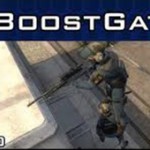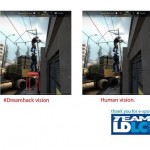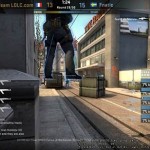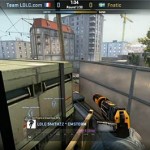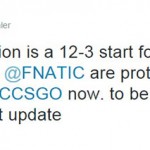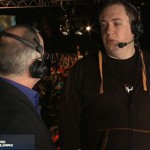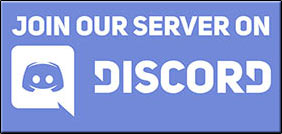Dreamhack CS:GO – #boostgate in LDLC vs FNATIC
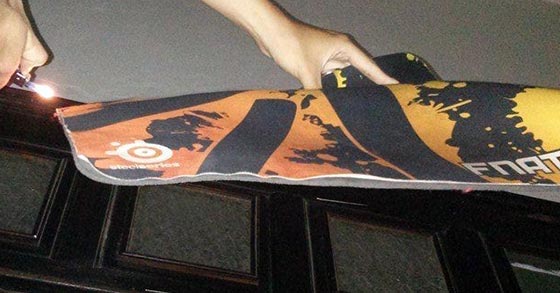
It’s been a horrible week for CS:GO E-sports, from hacking allegations of their pro-players in LANs to unfortunate VAC (Valve Anti-Cheat) bans for professional players by Valve.
The players who were VAC banned, KQLY from Titan, smn and Sf from Epsilon, have since been discharged from their respective teams as polygon reported.
Today bore witness to yet another controversy for the scene with yet another shitty -gate suffix for E-sports.
A highly controversial boost in the CT spawn of overpass allowed FNATIC to gain superior map knowledge and recover from a 13 (LDLC) -3 (FNATIC) scoreline to win the map 13-16 and eliminate LDLC from the quarter-finals of Dreamhack 2014.
In Dreamhack’s 2014 rules, pixelwalking is banned. This is exactly what is being shown in the picture. However, for Dreamhack 2014, they are using the summer 2013’s rules, which is understandable, since rules for competitions are set and sent to teams for them to agree and accept prior to the competition.
This caused the initial backlash: People were seeing pixelwalking in overpass by FNATIC, and they were thus outraged by it when they read the rules up online and saw this infraction.
This spawned outrage, most well-detailed over at reddit.com, where people were up in arms about the lack of honesty in general by FNATIC.
Accusations of aimkeying, abusing other map bugs to gain advantages over their opponents and unsportsmanlike behavior put all of FNATIC’s members in the spotlight of infamy.
On twitter, pro players were making their voices heard, with affected members of LDLC voicing disdain over both verdict and the way the pixelwalking complaint was handled.
Pixelwalking is an act of using invisible ledges formed by misaligned clipboxes. A row of misaligned pixels incorrectly form an invisible ledge jutting out from two merging clipboxes when the map is complied, allowing the player to pixelwalk.
It looks ridiculous certainly, an entire player model standing on thin air — most of the decriers state that it is against the spirit of the game, against the mapmaker’s intentions to even exploit such a tactic.
Is FNATIC blameless? No. First, two months ago, the person who posted the boost trick was asked by FNATIC members to remove the thread so that they can use it as a “dreamhack tactic”, many viewed this as hiding exploits so that the mapmaker cannot fix it.
Indeed, looking at the map editor (Hammer), the entirety of the place where the boost occurred was supposed to be a solid wall.
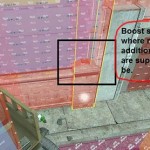
Clip means it’s a solid wall, and it’s supposed to be a fully solid, unstandable wall on the boost spot.
Although it is not wrong to do all they can to win, it should be wrong (and indeed, in the DH 2014 rules this is explicitly dealt with!) that they are exploiting map bugs to win. Counter-strike is a game that is all about information and execution.
Any bug that gives full information of vital areas of the entire map is one bug too much and should have never been viewed as a viable tactic to use, instead should have been something to be reported and fixed in the spirit of the game.
The bug also allowed you to view through textures straight into T-spawn, although FNATIC never abused this part of the bug.
Dreamhack ruled that both teams were to replay the map as LDLC did their own CT-spawn boost, a more traditional one, which allowed LDLC to similarly obtain less information, but as safely as FNATIC’s boost spot.
This was also considered in Dreamhack’s eventual ruling that the entire map of Overpass will be replayed from 0-0 after the first semi-finals, Virtus Pro v.s. Ninjas in Pyjamas.
FNATIC went on to use the boost spot for 11 rounds, winning each one. “I’ve never seen a crueler moment in Counter-Strike”, stated fifflaren from Ninjas in Pyjamas. Counter Strike is a game of momentum, and you can say that LDLC was thoroughly derailed after FNATIC used this tactic.
Even though the whole map will be replayed, a quick look at NBK’s twitter, the leader of LDLC, shows that they are dispirited as a result of the decision and the fact they lost to what they perceive as an exploit.
FNATIC has maintained silence throughout this issue on twitter, except stating that they have filed their own complaint, since there was an intermediate decision by the DH admins that the second half be replayed from 12-3.
[https://www.youtube.com/watch?v=Wor34WKxkpM&list=UUXbsUubmNPK8XJFbkmlMcMg&index=1]
Dreamhack’s decision for a replay is fully explained by Hellspawn in the above interview, but something more disconcerting was Dreamhack’s inability to spot subtle infringements as it happens and remedy the situation quickly — the professionalism of E-sports have always been called into question, and having slips of game knowledge by admins and decision makers do not help.
This is a simple reality that most E-sports tournaments use volunteers to fill the backbone of their administration.
The workers on scene are more often than not people who have passion for E-sports, but not the professional skills to carry out their roles. Personally, I support Dreamhack’s decisions. They are their own tournament, and it is their ruleset, ultimately.
However, in the face of community backlash and scrutiny, it looks unlikely that FNATIC’s victory can be considered “fair” and sadly, Dreamhack, as an organization, will view that as a very important part of their decision.
Regardless, it looks like we won’t be having anymore disputes until the event is totally over — FNATIC has forfeited the replay map. Below is a transcript of the desk interview with SirScoots and Hellspawn (Tournament director, Dreamhack)
Hellspawn: “FNATIC has forfeited… they felt they were accused from the start, they felt it was not playing for fun any more.”
“We have put a lot of precautions… we can do much more if we have time to prepare… we take things extremely serious.”
“Severe changes to step up our game, and to make us more credible as a CSGO game, community.
Sirscoots: “Will there be a unified ruleset? One which all tournaments will use?”
Hellspawn: “There have been a joint communication line for 1 year about this, but now we see there is a need to step it up much more”.
It seems that good has come out of this. Clearly, standardization is the path to walk when we want more professional games and a more professional standard in CSGO.
Riot Games has done this for League of Legends, fully sponsoring and creating their own scene with all in-house hired personnel managing the production of tournaments.
I think that more E-Sports scenes need to pay their admins and have professional, full-time refs and personnel that specialize for games.
Right now E-Sports is riding on the backs of volunteers doing things for free – this has been the case 15 odd years ago, but it’s slowly getting better. KESPA for korean broodwar, although controversial, has shown that full-time, salaried personnel improve the scenes’ professionalism because people are focused on it as a profession, rather than just a volunteer hobby with immaterial benefits.
If we want a better scene for E-sports, then we must start rewarding all parts of it. Casters, players, production crews are all important, but so are the people who do the legwork – referees, admins and of course, the assistant ushers.
More by Chen Yiji:
- MechWarrior 5: Mercenaries PC review – A time-demanding but action-intense Mecha game
- Borderlands 3 PC review – Bordering on the good side
- EA’s E3 2018 press conference – We’re all angry at Electronic Arts again
- This is why 2016 was simply amazing for SG eSports
- Interview with Witching Hour Studios creative director Ian Gregory – Masquerada: Songs and Shadows
Tags: #boostgate, Counter-Strike, CS:GO, Dreamhack, Dreamhack CS:GO, LDLC vs FNATIC



